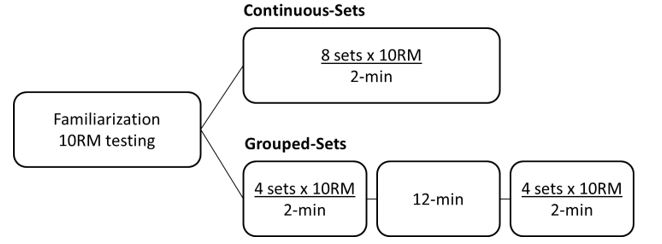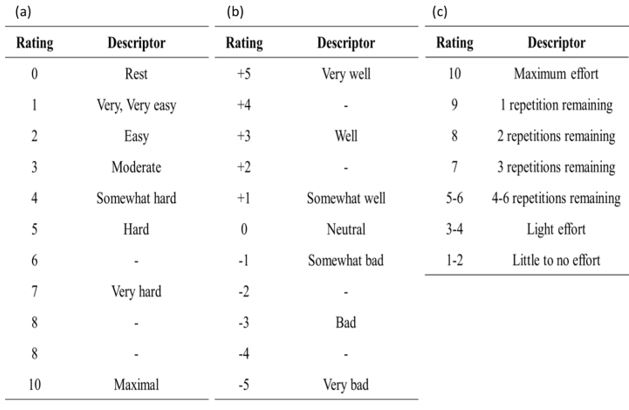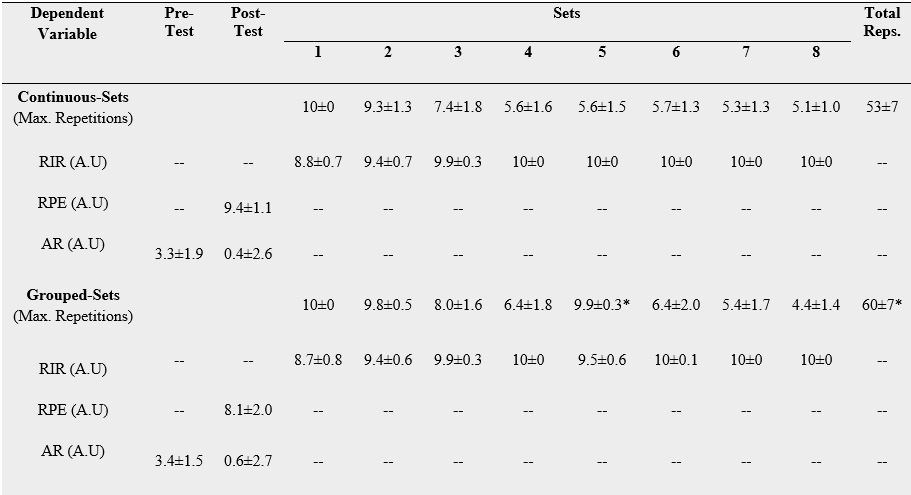Biography
Interests
Enrico Gori Soares1,2, Charles Ricardo Lopes1,5, Gustavo Zorzi Fioravanti1, Willy Andrade Gomes2, Josinaldo Jarbas da Silva2, Felipe Alves Brigatto1, Lee Edward Brown4 & Paulo Henrique Marchetti3*
1Department of Human Movement Sciences, Methodist University of Piracicaba, Piracicaba, SP, Brazil
2Research Group on Neuromechanics of the Resistance Training, Nove de Julho University, São Paulo, SP, Brazil
3Department of Kinesiology, California State University, Northridge, CA, USA
4Department of Kinesiology, California State University, Fullerton, CA, USA
5Adventist Faculty of Hortolandia, Hortolandia, SP, Brazil
*Correspondence to: Dr. Paulo Henrique Marchetti, California State University, Department of Kinesiology, 18111 Nordhoff Street, Northridge, CA, USA.
Copyright © 2018 Dr. Paulo Henrique Marchetti, et al. This is an open access article distributed under the Creative Commons Attribution License, which permits unrestricted use, distribution, and reproduction in any medium, provided the original work is properly cited.
Abstract
The purpose of the present study was to evaluate the acute subjective responses to a single RT session with continuous- and grouped-sets distributions in resistance-trained men. There were three sessions in a crossover/random fashion. On the first session, all subjects were familiarized and their biceps curl 10RM load was determined. The sessions were randomized for continuous- or grouped-sets distributions. For continuous-sets, 8 sets of 10RM were performed sequentially, while for grouped-sets, they performed two blocks of 4 sets of 10RM with 12-min of rest between blocks. Two minutes of rest was given between sets. Volume load and maximal number of repetitions were measured in both distributions. Rating of perceived exertion (RPE) was recorded 10 minutes after the 8th set for each distribution. Affective response was recorded before and 10 minutes after each distribution. Repetitions in reserve (RIR) were recorded after each set for each distribution. Results demonstrated a progressive reduction in the maximal number of repetitions performed during continuous-sets (P<0.05). However, for grouped-sets, there was a progressive reduction in the maximal number of repetitions performed from the 1st to the 4th set (P<0.05), and from the 5th to the 8th set (P<0.05), and a significantly greater volume load for continuous-sets vs. grouped-sets (3292±809kgf vs. 3692±891kgf; P<0.001, respectively). Also, there was significantly greater RPE for continuous-sets vs. groupedsets (9.37±1.06AU vs. 8.12±1.96AU; P=0.026). There were not differences in RIR between both distributions, while AR showed a reduction for both distributions (continuous-sets pre 3.31±1.92 vs. post 0.37±2.55; P=0.001), and grouped-sets (pre 3.37±1.50 vs. post 0.62±2.72; P=0.006). These findings demonstrate that grouped-sets allow more repetitions and greater volume load. However, continuous-sets distribution produces greater RPE but similar RIR when compared to groupedsets, while both distributions negatively affect AR after a RT session.
Introduction
Subjective scales are commonly used in resistance training (RT) programs to monitor exercise intensity, level
of effort, training load, or progression [1]. Studies have shown that subjective scales are sensitive to changes
in the acute variables of strength and to different populations [2,3], and could be used as an additional factor
controlling loads applied in both clinical and exercise settings [4,5]. There are several different subjective
scales available in the scientific literature aiming to control training load or exercise (i.e. rate of perceived
exertion (RPE), repetitions in reserve (RIR), and affective response to exercise (AR)).
Several methods can be proposed to manipulate load and sets (i.e. superset, compound sets, etc.) [6]. These methods are based on increasing rest between sets and exercises, changing the exercise order or muscle groups [7]. A method called continuous-sets is common in RT programs [8] and consists of performing all sets of each exercise sequentially. According to previous research, performing continuous-sets may alter muscle activation [9], level of neuromuscular fatigue [10], or transient muscle swelling in the prime movers [11]. Additionally, performing multiple sets continuously to muscle failure decreases the number of repetitions, and consequently, reduces the mechanical/metabolic stimulus to muscle adaptation [12]. In contrast, grouped-sets consists of performing a number of sets for a specific muscle group, then changing the muscle group for other sets, then returning to the first muscle group [12-29]. Both methods are commonly used in RT programs, however, to the best of our knowledge there are few studies comparing these different distributions using different subjective responses [4,30]. Also, it would be interesting to evaluate how manipulation of some RT methods impact subjective perception of effort.
Therefore, the purpose of the present study was to evaluate the acute subjective responses to a single RT session with continuous- vs, grouped-sets distribution in resistance-trained men. It was hypothesized that there would be a reduction in the maximal number of repetitions performed for continuous-sets when compared to grouped-sets distribution. Additionally, it was expected that there would be a high session rate of perceived exertion, low repetitions in reserve, and a reduction in the AR for continuous-sets when compared to grouped-sets distribution [2,3,31-34].
Methods
The sample size was justified by a priori power analysis based on a pilot study conducted previously, based on a significance level of 5% and a power of 80% derived from the rate of perceived exertion of individuals with the same characteristics used in the present study [35]. Sixteen physically active men volunteered for this study (age 27 ± 6 years, total body mass 81.8 ± 7.8kg, height 174 ± 5cm, biceps curl 10RM 61 ± 11kgf). All subjects were regularly engaged in a RT program for more than one year and were familiar with hypertrophy-type training and the standing biceps curl exercise. Subjects had no previous surgery and history of injury with residual symptoms within the last year on their upper limbs. The University research ethics committee approved this study (#67/2016), and all subjects read and signed an approved informed consent document.
Subjects were instructed not to perform any RT for 48 hours prior to each of three testing sessions. All tests were randomized and counterbalanced across subjects and experimental conditions. In the first session, upper limb dominance and anthropometric measures were taken. All subjects were right-arm dominant based on their preferred arm to write. Then, subjects were instructed in the proper technique for the biceps curl exercise (BC). For BC, all subjects were positioned standing in front of a cable-pulley machine and were instructed to use a supinated grip on a straight bar. They lifted the bar from complete elbow extension to complete elbow flexion (concentric phase), then returned to full elbow extension (eccentric phase). All subjects underwent 10RM testing (according to guidelines established by the National Strength and Conditioning Association [NSCA] [36]) to determine individual initial training loads. Three to five minutes rest were used between attempts. All subjects were familiarized with all subjective scales: (1) rate of perceived exertion (RPE), (2) affective response to exercise (AR), and (3) repetitions in reserve (RIR). Standard instructions and anchoring procedures for each scale were explained during the familiarization session.
Two sessions were randomly assigned for each subject and experimental conditions (Figure 1). For continuous-sets, subjects performed eight sets of 10RM with two minutes inter-set rest. For grouped-sets, they performed two blocks of 4 sets of 10RM, with 12-min rest between blocks (interval time to perform 4 sets of 10RM). All sets were executed to concentric failure (10RM) with two minutes inter-set rest. RIR was recorded after each set. Additionally, RPE and AR were recorded after the eighth set of each condition.

The maximal number of repetitions of each set was counted for each distribution. Volume load (VL) was calculated by the following formula: VL = Σ sets (number of repetitions x 10RM load) [37].
The RPE was assessed with a CR-10 scale using the recommendations of Sweet et al. [38]. Subjects were asked to use an arbitrary unit (AU) on the scale to rate their overall effort for each distribution. A rating of 0 was associated with no effort and a rating of 10 was associated with maximal effort and the most stressful exercise ever performed. After each experimental condition all subjects answered the following question based on CR-10 scale: “How was your workout?” (Figure 2a).
The AR was assessed with a bipolar numeric scale ranging from +5 (very well) and -5 (very bad) with zero corresponding to “neutral”. Subjects were asked to provide their emotional state before and after all sets in both distributions [39] (Figure 2b).
The RIR was assessed by a scale proposed by Zourdos et al., [40] specifically designed to measure the effort after each set for both distributions. Subjects were asked to provide how many repetitions they felt it was possible to perform at the end of each set for both distributions (Figure 2c).

Normality and homogeneity of variance were confirmed with the Shapiro-Wilk and Levene’s tests, respectively. A paired t-test was used to test differences in the RPE and volume load. A 2x2 repeatedmeasures ANOVA (distribution x time) was used to test differences in the AR. A 2x8 repeated-measures ANOVA (distribution x sets) was used to test differences in the RIR. Post-hoc comparisons were performed with a Bonferroni correction. Furthermore, the magnitudes of the differences were examined using the standardized differences based on Cohen’s d by means of effect sizes (d). The d results were qualitatively interpreted using the following criteria: <0.35 trivial; 0.35-0.80 small; 0.80-1.50 moderate; and >1.5 large, for recreationally trained subjects [41]. An alpha of 0.05 was used to determine statistical significance.
Results
There was a progressive reduction in the maximal number of repetitions performed during continuous-sets (P<0.05; d=0.96 [small effect]; Δ%=49%). However, for grouped-sets, there was a progressive reduction in the maximal number of repetitions performed from the 1st to the 4th set (P<0.05; d=0.81 [small effect]; Δ%=36%), and from the 5th to the 8th set, with no difference between 1st and 5th set (P<0.05; d=0.93 [small effect]; Δ%=55.6%) (Table 1).

*Significant difference between conditions from the corresponding set, P<0.001.RPE - rating of perceived exertion; RIR - repetitions in reserve; AR - affective response.
There was a greater Volume load for grouped-sets when compared to continuous-sets (3692 ± 891kgf vs. 3292 ± 809kgf, respectively; P<0.001; d=0.46 [small effect]; Δ%=10.8%). Rating of Perceived Exertion: There was a significant in the RPE between distributions (continuous-sets 9.37±1.06 AU vs. grouped-sets 8.12±1.96 AU; P=0.026; d=0.79 [small effect]; Δ%=13.3%) (Table 1).
There were not differences in RIR between both distributions. However, from 1st to the 4th set both distributions presented an increase in RIR (Continuous-sets: P<0.05, d=2.42 [large effect]; Δ%=15%; grouped-sets: P<0.05, d=2.29 [large effect]; Δ%=14.9%) (Table 1).
Discussion
To the authors’ knowledge, this was the first study to evaluate the acute subjective responses to a single RT session with continuous- vs. grouped-sets distributions in resistance-trained men. It was hypothesized to be a reduction in the maximal number of repetitions performed in continuous-set when compared to groupedsets distribution. The most important results of the present study were (a) a greater maximal number of repetitions and volume load after grouped-sets when compared to continuous-sets, and (b) a higher value of RPE after a continuous-sets distribution.
Several studies have demonstrated a progressive decrease in the maximal number of repetitions with continuous-sets, even when long inter-set rest intervals are used [31-34]. Willardson and Burkett [34], Scudese et al., [32], and Ratamess et al. [31] reported a reduction in the maximal number of repetitions performed during the bench press exercise (80%1RM, 3RM, and estimated 10RM, respectively) from the 1st to 5th set with 2 minutes rest between sets. The reduction in the maximal number of repetitions observed in previous studies was similar to our results in both conditions (continuous-sets: 49%, and grouped-sets: 43%). However, based on the characteristics of grouped-sets in our study, a higher volume load was observed (~10%) when a longer rest interval between blocks of sets was used. This result is in accordance with previous studies that demonstrated a time-efficient strategy with the use of alternate exercises aiming to sustain the maximal number of repetitions over multiple sets [10,23,42-45]. It is well accepted that a combination of central and peripheral fatigue is responsible for the reduction in strength over multiple sets [1], and the rest interval is the main acute variable responsible for removing this deleterious effect [29,46].
The microtrauma caused mainly by the eccentric action, combined with by products from anaerobic glycolysis and the accumulation of calcium within the sarcoplasmic reticulum, may inhibit excitation-contraction coupling temporarily, thus impairing volume load and peak force [47,48]. Previous studies have indicated that an increase in the rest interval between sets promotes removal of byproducts from the glycolytic system, restores adenosine triphosphate and phosphocreatine, and increases intracellular pH [19,29,49]. Therefore, grouped-sets presented higher volume load when compared to continuous-sets, and maintenance of the maximal number of repetitions across multiple sets.
Additionally, it was expected that a high RPE, low RIR, and a reduction in AR for continuous-sets when compared to grouped-sets [2,3,31-34], however these hypotheses were not confirmed by our results. The RIR after each set was similar between conditions even when the maximal number of repetitions was much smaller than the target number of repetitions (10RM). This effect might be explained by the high sense of effort after muscular failure (muscle fatigue) in each set in both conditions. Therefore, RIR seemed to be more affected by muscular failure than the absolute number of repetitions in each set.
Results of the present study, demonstrated a higher session RPE after continuous-sets when compared to grouped-sets (9.4 A.U vs 8.1 A.U., respectively). Tiggermann et al. [1] proposed that the afferent signals from muscles, joints, and skin are combined in an activity recall when RPE is reported. Since all training variables were maintained constant, except the load distribution, the greater rest interval between the 4th and 5th sets in grouped-sets might have resulted in less perception of effort. In this way, our results did not corroborate previous studies [50-54]. No differences were observed by changing exercise order [52,53] or rest interval length [46,48]. Overall, results of this study suggest that grouped-sets allow more repetitions to be performed, and have similar subjective responses in resistance trained men.
Finally, the findings of the present study are not in accordance with previous studies investigating the AR to RT [2,3]. Arent et al. [2] found a positive AR after a resistance training session for major muscle groups at 70% of 10RM when compared to 40 or 100% of 10RM. Bellezza et al. [3] observed an increase in AR after a RT session at 80 to 100% of 10RM. We observed a decrease in the affective response following both conditions. This might be related to differences in training volume, exercise intensity, or exercise order [1]. Our aim was to compare different set distributions in a RT session targeting the elbow flexors. This is similar to split routines where experienced lifters train no more than 2-3 muscle groups in a single session. However, previous studies investigated novice subjects using sub-maximal loads (70 and 80% of 10RM) and full body routines [2,3]. Since, exercise adherence has been related to the affective response to exercise [30], periods with reduced loads or different set distributions might be important to the experienced lifter.
Conclusion
Our results suggest that grouped-sets allow more repetitions in a single RT session; and higher volume load when compared to continuous-sets. Continuous-sets produce a higher RPE, and similar RIR when compared to grouped-sets, and both distributions negatively affect AR.
Conflicts of Interest
All authors have no conflict of interests.
Bibliography

Hi!
We're here to answer your questions!
Send us a message via Whatsapp, and we'll reply the moment we're available!